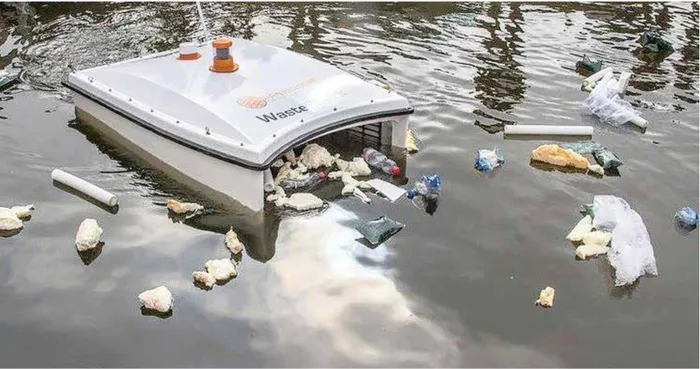Robot shark won't put up with any rubbish

The WasteShark, an autonomous robot ‘shark’ that eats plastic waste, works in a harbour area to tackle rubbish and combat pollution. The WasteShark, an autonomous robot ‘shark’ that eats plastic waste, works in a harbour area to tackle rubbish and combat pollution.
It is the Kreepy Krauly of the seas, a locally conceived robotic shark that chows down on garbage and is now doing it all by itself.
Earlier this week, RanMarine, a Dutch technology company, announced the launch of WastShark in the small harbour town of Ilfracombe, North Devon, in the UK.
This is the first time WasteShark has been introduced to the UK and the first time it will be fully autonomous.
Now with the use of GPS, this next generation of WasteShark is programmed to work a patch of water without having an operator to guide it through remote control.
The introduction of this next generation of WasteShark is yet another achievement for South African inventor Richard Hardiman, who got his inspiration to create his waste-
gobbling aquadrone from the whale shark, which has a gaping mouth it uses to scoop up tons of plankton.
The WasteShark has a scoop for a mouth that skims the surface and collects floating rubbish. This is then collected in an onboard hopper, which is later removed.
WasteShark was introduced to the V&A Waterfront, in Cape Town, as part of a pilot project just over a year ago.
It is no longer in use there, but Hardiman believes that his aquadrone might soon find a home in another busy South African port.
“We are working quite closely with Durban, who are pushing themselves as a smart city,” says Hardiman.
“Durban is built on three or four rivers and all of those rivers act as trash tributaries as the rubbish comes down from the hills. They are interested in the autonomous version,” he says.
What is attractive about the WasteShark is that it doesn’t sleep.
“The beauty of using drones to do this is that they are ever-present. It is not like labour that can only work for eight hours, then stop and work the next day. They can go 24 hours a day.”
RanMarine have now completed what it calls a “shark pod”. This is a base station for WasteSharks that will come in, empty
trash, recharge and head out again.
“So, you have a fully autonomous loop where you don’t need human intervention,” says Hardiman.
The calculations suggest that if it is used five days a week, a Wasteshark could end up collecting over 15 tons of waste a year. That makes it a potentially useful tool in the fight to eliminate ocean plastic waste.
The World Wildlife Fund estimates that eight million tons of plastics
ends up in the sea every year. This
has a knock-on effect on the ocean’s wildlife, with 90% of the world’s seabird’s having fragments of plastic in their stomachs.
In the Pacific, there are huge areas of ocean covered in plastic debris.
Hardiman believes WasteShark might help in gobbling away mega mats of refuse.
“We have looked at making a great Wasteshark. The idea is that this would be used more off shore, and could be used to tackle things like the Pacific gyres,” he says.